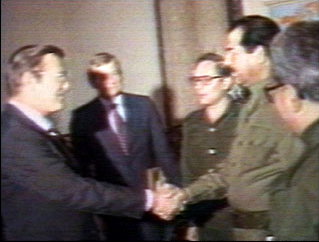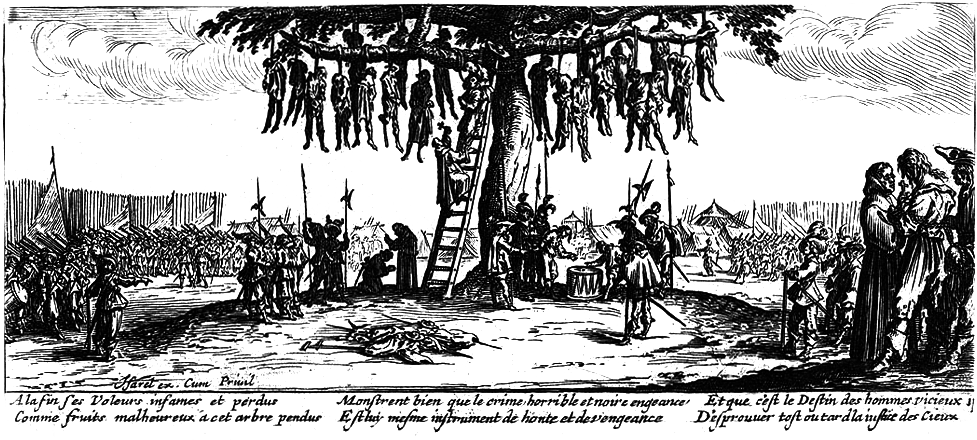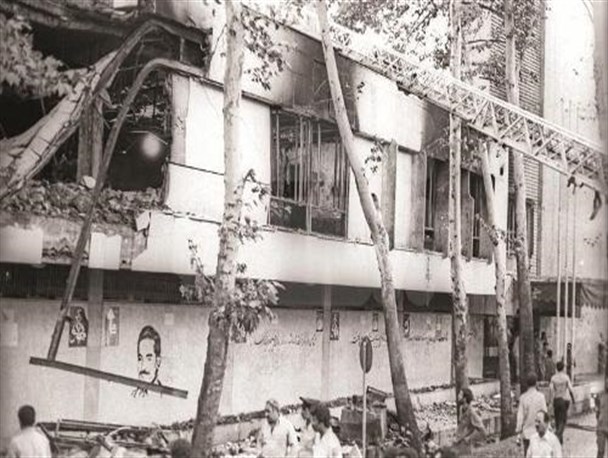|
Resolution 598
United Nations Security Council resolution 598 S/RES/0598 (1987), (UNSC resolution 598) adopted unanimously on 20 July 1987, after recalling Resolution 582 and 588, called for an immediate ceasefire between Iran and Iraq and the repatriation of prisoners of war, and for both sides to withdraw to the international border. The resolution requested Secretary-General Javier Pérez de Cuéllar to dispatch a team of observers to monitor the ceasefire while a permanent settlement was reached to end the conflict. Iraq quickly accepted the resolution, but Iran refused to accept its terms until nearly a year after its adoption. Famously, Ayatollah Ruhollah Khomeini felt that accepting the resolution was "more deadly than drinking from a poisoned chalice". The resolution finally became effective on 8 August 1988, ending all combat operations between the two countries and the Iran–Iraq War. Resolution and initial reactions The Security Council had unanimously adopted resolutions again ... [...More Info...] [...Related Items...] OR: [Wikipedia] [Google] [Baidu] |
United Nations Security Council Resolution 582
United Nations Security Council resolution 582, adopted unanimously on 24 February 1986, after noting that the council had been seized for six years and the continued conflict between Iran and Iraq, the council deplored the initial acts that started the Iran–Iraq War and continuation of the conflict. The Council then condemned the escalation of the conflict, including territorial incursions, the bombing of civilian areas, attacks on neutral shipping, violation of international law and use of chemical weapons by Iraq, contrary to the Geneva Protocol of 1925. The resolution called upon Iran and Iraq to cease hositilies and observe a ceasefire, with a complete withdrawal of military forces to their internationally recognised borders, as well as an exchange of prisoners of war facilitated by the International Committee of the Red Cross. It also urged both parties to submit all aspects of the conflict immediately to mediation and requested the Secretary-General Javier Pérez de C ... [...More Info...] [...Related Items...] OR: [Wikipedia] [Google] [Baidu] |
Second Battle Of Al-Faw
The Second Battle of al-Faw (also known as the Operation Ramadan Mubarak (Blessed Ramadan), fought on 17 April 1988, was a major battle of the Iran–Iraq War. After their defeat at the First Battle of al-Faw two years earlier, the newly restructured Iraqi Army conducted a major operation to clear the Iranians out of the peninsula. The Iraqis concentrated well over 100,000 troops from the battle-hardened Republican Guard. The heavy use of chemical weapons quickly disarrayed the Iranian defenses, which consisted of 15,000 Iranian Basij volunteers. The southern wing of the assault consisted of the Republican Guard's Madinah and Baghdad Divisions, which assaulted the Iranian lines and then allowed the Hammurabi Armoured Division to pass through and move along the southern coast of the peninsula and into al-Faw itself. Meanwhile, the regular Iraqi Army's VII Corps attacked the northern end of the line with the 7th Infantry and 6th Armoured Divisions. While the 7th Infantry's attac ... [...More Info...] [...Related Items...] OR: [Wikipedia] [Google] [Baidu] |
Gulf War
, combatant2 = , commander1 = , commander2 = , strength1 = Over 950,000 soldiers3,113 tanks1,800 aircraft2,200 artillery systems , page = https://www.govinfo.gov/content/pkg/GAOREPORTS-PEMD-96-10/pdf/GAOREPORTS-PEMD-96-10.pdf , strength2 = 1,000,000+ soldiers (~600,000 in Kuwait)5,500 tanks700+ aircraft3,000 artillery systems , casualties1 = Total:13,488 Coalition:292 killed (147 killed by enemy action, 145 non-hostile deaths)776 wounded (467 wounded in action)31 tanks destroyed/disabled28 Bradley IFVs destroyed/damaged1 M113 APC destroyed2 British Warrior APCs destroyed1 artillery piece destroyed75 aircraft destroyedKuwait:420 killed 12,000 captured ≈200 tanks destroyed/captured 850+ other armored vehicles destroyed/captured 57 aircraft lost 8 aircraft captured (Mirage F1s) 17 ships sunk, 6 captured. Acig.org. Retrieved on 12 June 2011 , casualties2 = Total:175,000–300,000+ Iraqi:20,000–50,000 killed ... [...More Info...] [...Related Items...] OR: [Wikipedia] [Google] [Baidu] |
Belgium
Belgium, officially the Kingdom of Belgium, is a country in Northwestern Europe. Situated in a coastal lowland region known as the Low Countries, it is bordered by the Netherlands to the north, Germany to the east, Luxembourg to the southeast, France to the south, and the North Sea to the west. Belgium covers an area of and has a population of more than 11.8 million; its population density of ranks List of countries and dependencies by population density, 22nd in the world and Area and population of European countries, sixth in Europe. The capital and Metropolitan areas in Belgium, largest metropolitan region is City of Brussels, Brussels; other major cities are Antwerp, Ghent, Charleroi, Liège, Bruges, Namur, and Leuven. Belgium is a parliamentary system, parliamentary constitutional monarchy with a complex Federation, federal system structured on regional and linguistic grounds. The country is divided into three highly autonomous Communities, regions and language areas o ... [...More Info...] [...Related Items...] OR: [Wikipedia] [Google] [Baidu] |
1975 Algiers Agreement
The 1975 Algiers Agreement, also known as the Algiers Accord and the Algiers Declaration, was signed between Iran and Iraq to settle any outstanding territorial disputes along the Iran–Iraq border. Mediated by Algeria, it served as the basis for additional bilateral treaties signed on 13 June 1975 and 26 December 1975. The territorial disputes in question concerned Iraq's Shatt al-Arab and Iran's Khuzestan Province, and Iraq had wished to negotiate to end Iran's support for the then-ongoing Iraqi Kurdish rebellion after suffering a military defeat in the 1974–1975 Shatt al-Arab conflict. On 17 September 1980, shortly after the Iranian Revolution, the Iraqi government abrogated the treaty in light of another series of cross-border clashes between the two countries. On 22 September 1980, the treaty was completely voided with the Iraqi invasion of Iran, which triggered the eight-year-long Iran–Iraq War. Today, friction continues on the two countries' border despite the t ... [...More Info...] [...Related Items...] OR: [Wikipedia] [Google] [Baidu] |
Status Quo Ante Bellum
The term is a Latin phrase meaning 'the situation as it existed before the war'. The term was originally used in treaties to refer to the withdrawal of enemy troops and the restoration of prewar leadership. When used as such, it means that no side gains or loses any territorial, economic, or political rights. This contrasts with , where each side retains whatever territory and other property it holds at the end of the war. Historical examples An early example is the treaty that ended the Byzantine–Sasanian War of 602–628 between the Eastern Roman and the Sasanian Persian Empires. The Persians had occupied Asia Minor, Palestine and Egypt. After a successful Roman counteroffensive in Mesopotamia finally ended the war, the integrity of Rome's eastern frontier as it was prior to 602 was fully restored. Both empires were exhausted after this war, and neither was ready to defend itself when the armies of Islam emerged from Arabia in 632. Another example is the sixteenth-cent ... [...More Info...] [...Related Items...] OR: [Wikipedia] [Google] [Baidu] |
Iraqi Invasion Of Kuwait
The Iraqi invasion of Kuwait, codenamed Project 17, began on 2 August 1990 and marked the beginning of the Gulf War. After defeating the State of Kuwait on 4 August 1990, Iraq went on to militarily occupy the country for the next seven months. The invasion was condemned internationally, and the United Nations Security Council (UNSC) adopted numerous resolutions urging Iraq to withdraw from Kuwaiti territory. The Iraqi military, however, continued to occupy Kuwait and defied all orders by the UNSC. After initially establishing the " Republic of Kuwait" as a puppet state, Iraq annexed the entire country on 28 August 1990; northern Kuwait became the Saddamiyat al-Mitla' District and was merged into the existing Basra Governorate, while southern Kuwait was carved out as the all-new Kuwait Governorate. By November 1990, the adoption of UNSC Resolution 678 officially issued Iraq an ultimatum to withdraw unconditionally by 15 January 1991 or else be removed by "all necessary means ... [...More Info...] [...Related Items...] OR: [Wikipedia] [Google] [Baidu] |
UN Peacekeepers
Peacekeeping by the United Nations is a role of the United Nations's Department of Peace Operations and an "instrument developed by the organization as a way to help countries torn by conflict to create the conditions for lasting peace". It is distinguished from peacebuilding, peacemaking, and peace enforcement although the UN does acknowledge that all activities are "mutually reinforcing" and that overlap between them is frequent in practice. Peacekeepers monitor and observe peace processes in post-conflict areas and assist ex-combatants in implementing the peace agreements they may have signed. Such assistance comes in many forms, including separating former combatants, confidence-building measures, power-sharing arrangements, electoral assistance, strengthening the rule of law, and economic and social development. Accordingly, UN peacekeepers (often referred to as Blue Berets or Blue Helmets because of their light blue berets or helmets) can include soldiers, police office ... [...More Info...] [...Related Items...] OR: [Wikipedia] [Google] [Baidu] |
Drumhead Court-martial
A drumhead court-martial is a court-martial held in the field to render summary justice for offenses committed in action. The term is said to originate from drums used as improvised tables and drumheads as writing surfaces at fast-track military trials and executions. Origins The earliest recorded usage is in an English memoir of the Peninsular War (1807). The term sometimes has connotations of summary justice, with an implied lack of judicial impartiality, as noted in the transcripts of the trial at Nuremberg of Josef Bühler. According to Sir Arthur Wynne Morgan Bryant, such courts-martial have ordered lashings or hangings to punish soldiers (and their officers) who were cowardly, disobedient, or, conversely, acted rashly; and especially as a discouragement to drunkenness. It is also used as a reference to a kangaroo court in its derogatory form. World War II Nazi Germany From 1934, every division of the German Army had a court martial. After the occupation ... [...More Info...] [...Related Items...] OR: [Wikipedia] [Google] [Baidu] |
People's Mojahedin Organization Of Iran
The People's Mojahedin Organization of Iran (PMOI), also known as Mojahedin-e-Khalq (MEK) or Mojahedin-e-Khalq Organization (MKO) (), is an Iranian dissident organization. It was an armed group until 2003, afterwards transitioning into a political group. Its Camp Ashraf 3, headquarters is currently in Albania. The group's ideology was influenced by Islam and revolutionary Marxism; and while it denied Marxist influences, its revolutionary reinterpretation of Shia Islam was shaped by the writings of Ali Shariati. After the Iranian Revolution, the MEK opposed the new theocratic Government of the Islamic Republic of Iran, seeking to replace it with its own government. At one point the MEK was Iran's "largest and most active armed dissident group", and it is still sometimes presented by Western political backers as a major Iranian opposition group. The MEK is known to be deeply unpopular today within Iran, largely due to its siding with Iraq in the Iran–Iraq War and continued ties wit ... [...More Info...] [...Related Items...] OR: [Wikipedia] [Google] [Baidu] |
1987 Mecca Incident
On 31 July 1987, during the Hajj (Arabic for pilgrimage) in Mecca, a clash between Shia pilgrim demonstrators and the Saudi Arabian security forces resulted in the death of more than 400 people. The event has been variously described as a "riot" or a "massacre". It developed from increasing tensions between Shia Iran and Sunni Saudi Arabia since the 1979 Iranian Revolution. Since 1981, Iranian pilgrims have held a political demonstration against Israel and the United States every year at Hajj, but in 1987, a cordon of Saudi police and the Saudi Arabian National Guard sealed part of the planned demonstration route, resulting in a confrontation between them and the pilgrims. This escalated into a violent clash, followed by a deadly stampede. How many pilgrims died and how they died are both disputed. Both Iran and Saudi Arabia blame each other for the loss of life. Estimates of fatalities range from 400 with thousands more injured (Iranian government); 402, of which 275 were Irania ... [...More Info...] [...Related Items...] OR: [Wikipedia] [Google] [Baidu] |


